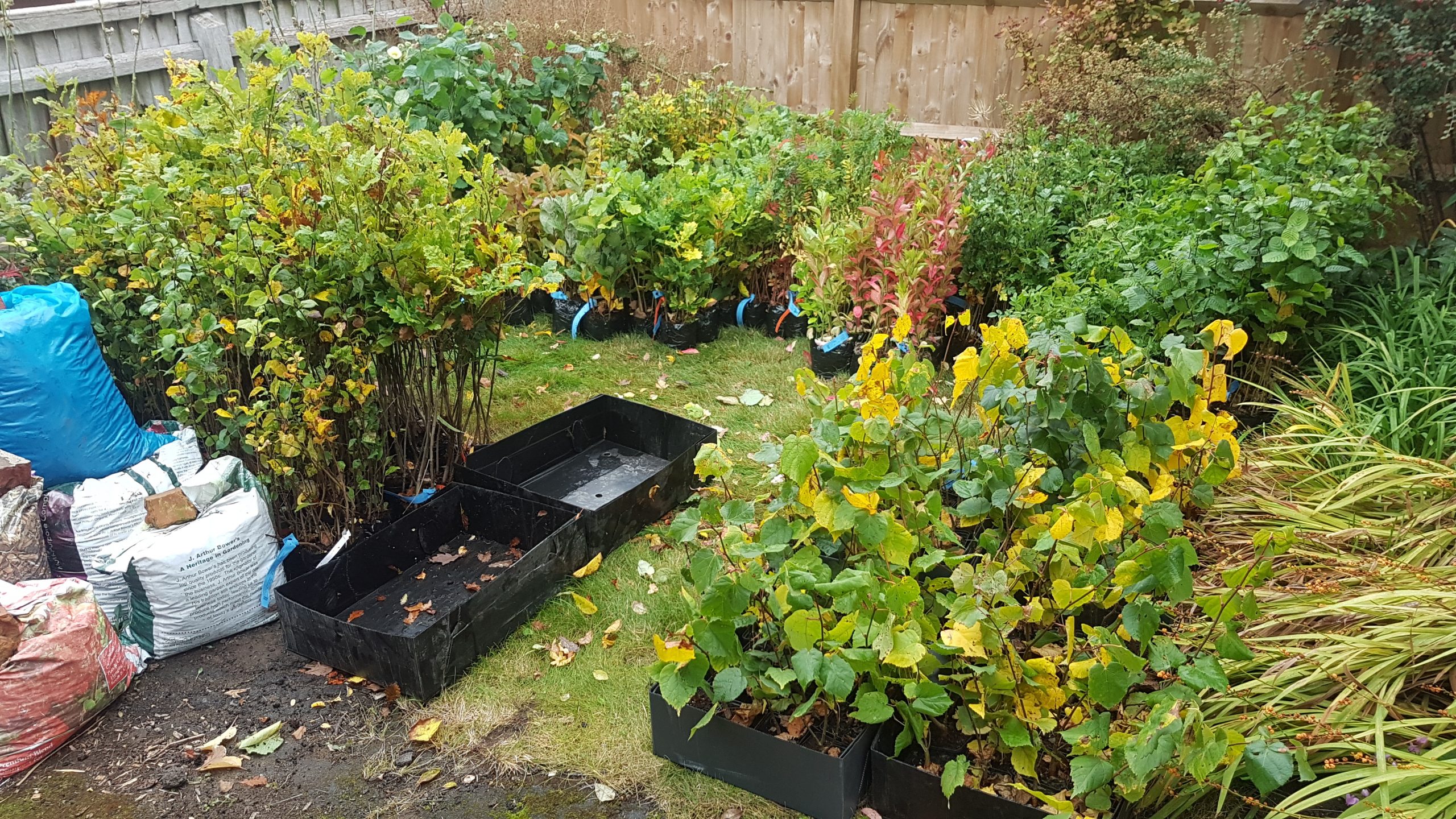Free Garden Trees for residents of Henley and local villages in 2022

Greener Henley are once again offering free garden trees in the form of saplings to residents of Henley and local villages!
We have been able to do this thanks to funding from OCC Councillor Stefan Gawrysiak, Henley Town Council Climate Emergency 2030 Working Group (CE2030WG) and donations of funding and trees by Greener Henley members. We welcome donations to keep this scheme going.
Last year we distributed 750 trees and shrubs and we assisted in planting about 200 of them. Most of the trees and shrubs we offer are whips that are about 40 to 50 centimetre tall. They are cell grown and come in a plug of compost that makes them easy to plant. Some of the trees and shrubs we have grown ourselves and they come in pots, a few are bare root and they require planting in the ground as soon as you get them. We will provide you with instructions on how to plant.
This year we have a variety of trees and shrubs to offer, all described below. It is really important to consider how much space a tree will eventually need and whether it will be right for your garden when selecting, so please take the time to read through the descriptions. Please note that some species are recommended for large gardens and woodland only (see below).
Complete our form to let us know what trees you would like.
SPECIES FOR GARDENS
SILVER BIRCH – one of the UK’s most well-known and hardiest native trees, offering so much interest due to its graceful habit and papery/peeling white bark with brown contrast. It supports over 300 species of insect. Silver Birch can grow to 30 metres, however they are a delightful garden tree with small shimmering leaves that provide dappled shade. They can be grown in small clusters with a spacing of about 1 metre to provide a feature in the garden.
ROWAN – offers interesting flowers, foliage, fruit and wonderful colours in the Autumn, with red, orange and yellow. Clusters of creamy white flowers in summer which once pollinated form bundles of red berries. Both flowers and berries are an indulgent treat for wildlife; the flowers provide pollen and nectar for bees and the berries are good autumn sustenance for birds. Rowan can grow to 15 metres, however it takes 200 years to do so. It should be given a space of about 1.5 to 2 metres all round.
CRAB APPLE – has a sweetly scented blossom in the Spring which is pollinated by insects and bees. The pinky white blossom then develops into small, yellow-green apple like fruits. Crab apple is an important food source for wildlife. The leaves are enjoyed by caterpillars of many moths, the flowers are an important early pollen source and the long lasting fruits are eaten by birds during the winter months. A slow growing tree that can grow to 10 metres. It can easily be pruned to fit in with a garden. It should be given a space of about 1.5 to 2 metres all round.
HAZEL – is often coppiced, where it can be kept to a height to fit into a border. When left to grow, trees can reach a height of 12metres Its leaves are soft to the touch. In autumn it can have small, green catkins and in winter it has nuts, which are each held in a short leafy husk.
SPECIES FOR LARGE GARDENS & WOODLAND ONLY
OAK – supports more life than any other native tree species in the UK, even its fallen leaves support biodiversity. They will grow in most soils however they do not like extreme dry or extreme wet conditions. They can reach 20 to 40 metres in maturity after 200 years and have a life expectancy of over 500 years.
BLACK POPLAR – mature trees grow to 30m and can live for 200 years. A declining species in the UK, it is rare and grows in isolation. It grows best in boggy conditions, near ditches and floodplains. Black poplar is the most endangered native timber tree in Britain.
WILD CHERRY – mature trees can grow to 30m and live for up to 60 years. It has a beautiful blossom and a bounty of bright red fruits. It grows best in full sunlight and fertile soil and is one of the prettiest native trees, relished by gardeners and wildlife. Because of it’s fast growth, it is an excellent tree for sequestering carbon as well as providing an early source of nectar and pollen for bees and fruit for birds and small mammals.
HAWTHORN – when pruned as part of a hedge, it has a dense thorny habit.. Otherwise, mature trees can reach a height of 15m as a small tree with a single stem. It will grow in most soils, but flowers and fruits best in full sun.
WALNUT – a deciduous broadleaf tree which can grow to 35m. Walnut is a native from south-east Europe to south-west China, that has been widely planted throughout the UK. It prefers well-drained, fertile and alkaline loam and is found in large gardens and parks.



Rowan, Hazel and crabapple please
Hi Pippa,
Thanks for your request – would you mind filling in our request form if you haven’t already? That would help us keep track of everything best. You can access it here: https://docs.google.com/forms/d/e/1FAIpQLSe3jRYAnMPcQY0-Wu97scyd_4KGWb8tGJWKW-_S0U8E9XC_iA/viewform
Many thanks,
Julia